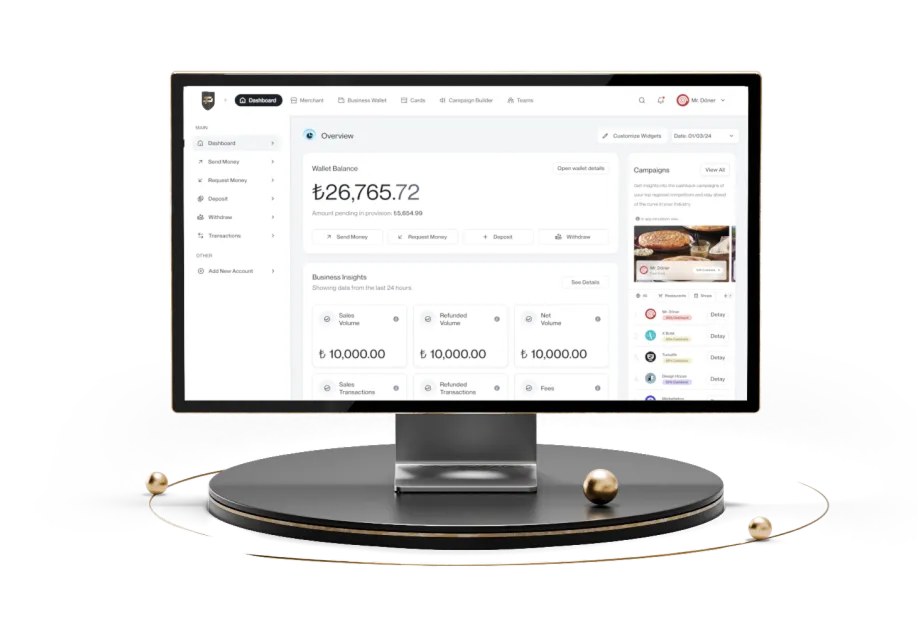What is Marketplace Integration? How Is It Done?
In the e-commerce world, success today is no longer just about selling products but about managing a fast and multi-channel operation. Listing products on various marketplaces, managing inventory, tracking orders, and maintaining high customer satisfaction — all of these become time-consuming and error-prone when done manually. This is precisely where marketplace integration comes into play. This system, which enables you to manage multiple sales channels from a single dashboard, enhances operational efficiency while providing an opportunity to boost your sales. So, what exactly is marketplace integration, how is it done, and what advantages does it provide to businesses? Let’s take a closer look.
What is marketplace integration?
Marketplace integration is a solution that enables an e-commerce business to manage its product catalog, stock information, orders, and invoicing processes on platforms like Trendyol and Hepsiburada through an API or XML-based automated system, utilizing a centralized control panel. Thanks to this system, sellers can list their products on multiple marketplaces at once, reflect price and stock changes to all channels instantly, and automate order, shipping, and invoicing operations. As a result, both the operational workload and the multi-channel sales strategy become more efficient.

How is marketplace integration done?
E-commerce businesses prefer marketplace integration to ease their operational burden and manage products sold on different channels from a single point. The steps of this process are as follows:
Choosing the marketplace
The first step is to decide which marketplaces to sell on. You should choose among popular platforms such as Trendyol, Hepsiburada, and Amazon based on your product category, target audience, and commission-cost structures.
Obtaining API/XML access
API keys or XML access credentials required for integration are obtained from the selected platforms. These credentials include the identity and access information necessary for data exchange between the system and the marketplace.
Selecting an integration solution (panel)
An integration provider or software solution is chosen. These tools transfer the API information into the system and prepare the connection.
Establishing the connection in the panel
API/XML credentials are entered into the selected integration panel to test the connection between the system and the marketplace. At this stage, the system must confirm that data exchange is functioning correctly.
Matching categories, products, and data
Since each platform has a different category system, products must be matched correctly with the appropriate categories in the integration panel. Product titles, descriptions, prices, and stock details should be mapped in a synchronized manner.
Product transfer – synchronization
After product and data mapping is completed, products are transferred between the system and the platform. Titles, images, prices, and variants are sent to the platform.
Stock and price updates
Sales and stock inputs made through the system are reflected on all platforms in real time. Thus, stock shortages or price changes are updated without delay.
Order, invoice, and shipment management
All orders from marketplaces are collected in the integration panel. E-invoices, shipping barcodes, and labels are generated automatically. The system integrates seamlessly with accounting and shipping systems, ensuring smooth processes.
Testing, optimization, and monitoring
After testing all flows, live usage begins. During operation, data flows, potential errors, and matching issues are monitored, and adjustments are made.

What is the purpose of marketplace integration?
Marketplace integration, which provides efficiency, error control, operational harmony, and increased sales, is strategically advantageous for businesses. For e-commerce companies selling across multiple marketplaces, this system reduces operational burden and contributes to growth.
What are the advantages of marketplace integration?
The advantages of marketplace integration for businesses can be listed as follows:
Broader customer reach
The potential customer pool expands significantly thanks to marketplace integration, as products can be distributed to multiple marketplaces from a single center.
Time and operational efficiency
Since inventory, price, order, and content updates are managed through a single panel, there is no need for manual operations, which saves time and reduces human error.
Real-time inventory tracking
With marketplace integration, a sale or price update on one platform is instantly reflected on all others — inventory is updated quickly, minimizing the risk of overselling.
Centralized order, invoice, and shipping management
All orders are consolidated in one panel; shipping labels and invoices are automatically generated, making integration with accounting systems easier.
Potential for international expansion
Integration solutions also provide access to international marketplaces, offering global marketing opportunities for small businesses.
We can also assist you with a few additional topics for your e-commerce site. You can apply for Papel Virtual POS to make it easier to receive payments and learn more about QR payment methods. For more solutions that Papel offers to businesses, please visit our website.

